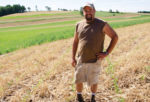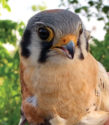Advertise Follow Us
No-Till Farmer

View Archived Issues
September 2022
Volume: 51
Edition: 9
Get full access NOW to the most comprehensive, powerful and easy-to-use online resource for no-tillage practices. Just one good idea will pay for your subscription hundreds of times over.
-
Table of Contents
Table of Contents
Digital Subscribers enjoy full access to No-Till Farmer's premium content. A paid subscription is required in order to read these stories.Are you a Premium or Digital subscriber? You enjoy:
- Unlimited access to all digital content here
- Freedom to view No-Till Farmer on all your devices
- Gleaning years of knowledge from the world's largest online library dedicated to no-till practices
Are you a Print only subscriber? Easily upgrade your subscription today! For only $10 more on a one year option, you gain the benefits of both the print edition delivered to your door and unlimited access to thousands of online pages of no-till content.
No-Till Innovation Comes in Leaps and Bounds
Wisconsin no-till dairyman Chris Conley thwarts heavy rain and hills with no-till, covers and planting green.Read MoreWhat I've Learned from No-TillingNo-Tilling Boy Scout Style: Always Prepared
Robust storage allows off-peak bulk purchase of farm inputs, which are then applied at the perfect time with on-farm application equipment run by expert help.Read MoreAhead of the CurveElectro Shock Therapy for Weeds Shows Promise as Herbicide Alternative
Technology using electric currents to destroy weeds gains traction overseas as countries look for less toxic, less resistant ways to control weeds.Read MoreIdeas Abound at 2022 National Strip-Tillage Conference
The 9th annual event highlighted new strategies to improve yields, manage nutrients, alleviate compaction and more.Read MoreNo-Till’s Best Innovators and Legends Share Their Failures and Successes
No-till experts provide valuable insight during special Q&A session at the National No-Tillage Conference.Read MoreTop 10 Lessons about Soil Fertility
Doug Miller, vice president of Midwest Bio-Tech, discusses 10 lessons he has learned about the interaction of soil fertility and microbial activity over 40 years.Read MoreCongress Hears About No-Till in First Testimony
Frank Lessiter’s 1973 speech is considered the earliest congressional testimony on no-tillage.Read MoreWelcoming Wildlife with No-Till
Usually touted for its soil health benefits and how it reduces erosion and improves workload, no-till is helping this Wisconsin dairy operation have a positive effect on the local kestrel population as well.Read More -
Featured Articles
Featured Articles
- Digital Edition

.png?height=125&t=1731942302&width=150)











